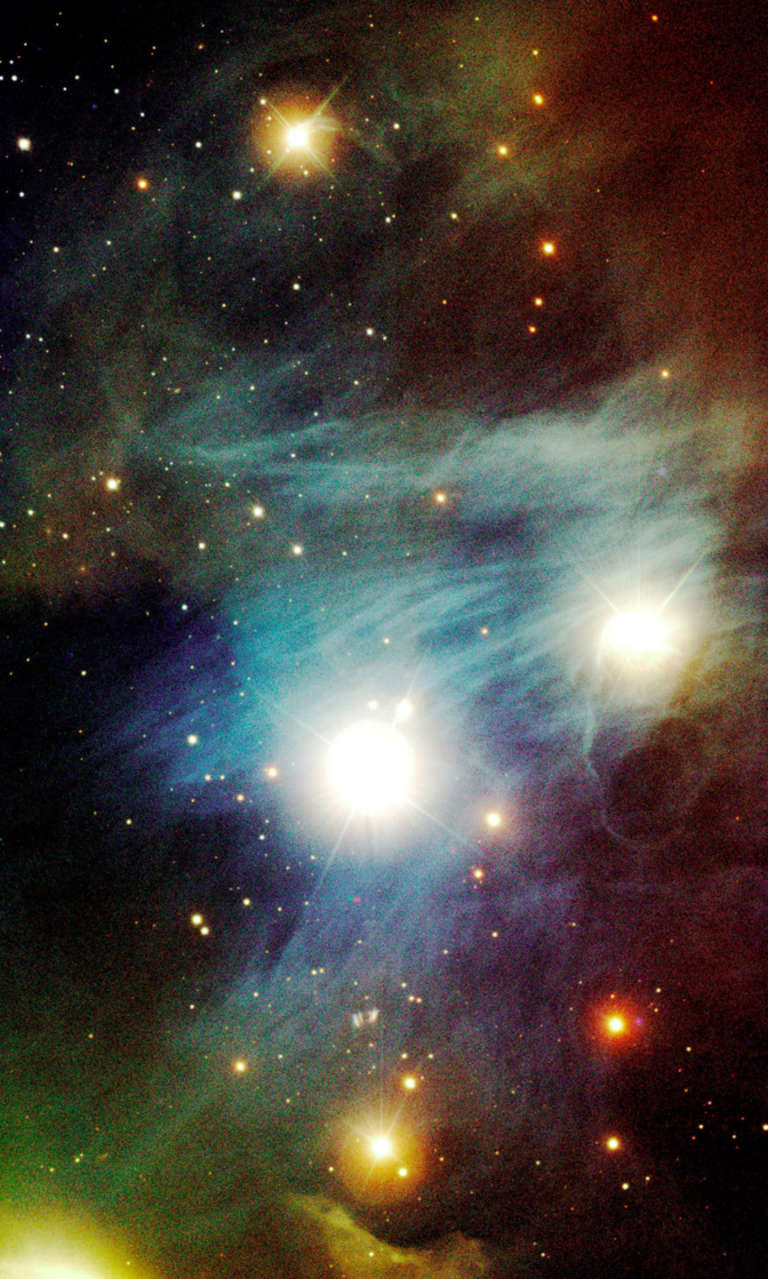Emily Lakdawalla • Jan 21, 2013
Stars, and stars, and stars: pretty pictures from the European Southern Observatory
My solar system chauvinism is well-established, but I am as much a sucker for beautiful astrophotos as the rest of you. Once in a while I get a media advisory from the European Southern Observatory about a new pretty picture posted on their website, and then I inevitably lose an hour following links to one stunner after another. Here are a few that particularly struck me on a recent random walk through their website; I heartily encourage all of you to take your own turn through their archives!
Here's the one that prompted my journey through the ESO archives last week. A stellar nursery of cool cosmic dust obscuring background stars, with two blazing baby blue stars beginning to blast the dust clear of their neighborhoods.

Here's an amazingly colorful palette of stars and nebulae, achieved by viewing the Chameleon I region in visible and near-infrared wavelengths. The original image was extremely noisy but I liked its colors so I applied a bit of a blur and reduced its size to squash the effect of the noise somewhat. This is an operation I commonly apply to noisy planetary images, but I'm not sure if it will offend astronomers for me to try to blur noise away in this fashion!

This next one is also speckled, but not a single one of those specks is "noise." Each and every one is something -- a star, planet, galaxy, or bit of sky obscured by dust. This is the entire sky, projected so that the galactic plane crosses the center, making it seem as though we're standing outside the Milky Way (though of course we are embedded on its outskirts). The amazing thing about this particular photo is that, even when you enlarge it, you're seeing it at something like only a seventh of the resolution of the image product it's made from. That product is ESO's "GigaGalaxy Zoom" project.

Finally, because one galaxy is not enough, here's the sort of photo that used to make me feel vertigo as a kid: a galaxy cluster. At the resolution embedded below, it looks like a starry sky. In fact, nearly everything in this photo is not a star -- each is a galaxy containing a billion-ish stars. (Stars are round overexposed dots, usually with rays resulting from internal reflections in the telescope optics. There's also at least one asteroid, recognizable because of its dotted-line appearance as red, then blue, then a long way away, green dots.) The original image is astonishingly huge, more than 17,000 pixels wide.

There's a wonderful poem in the children's book Comets, Stars, the Moon, and Mars that I think of now every time I gaze upon a photo like that one:
A galaxy has stars galore:
A million, billion, maybe more.
Some galaxies are round, some flat.
Some form spirals. Some seem fat.
Some are egg shaped. Some have bars.
All have stars, and stars, and stars.Douglas Florian
Support our core enterprises
Your support powers our mission to explore worlds, find life, and defend Earth. You make all the difference when you make a gift. Give today!
Donate

 Explore Worlds
Explore Worlds Find Life
Find Life Defend Earth
Defend Earth

